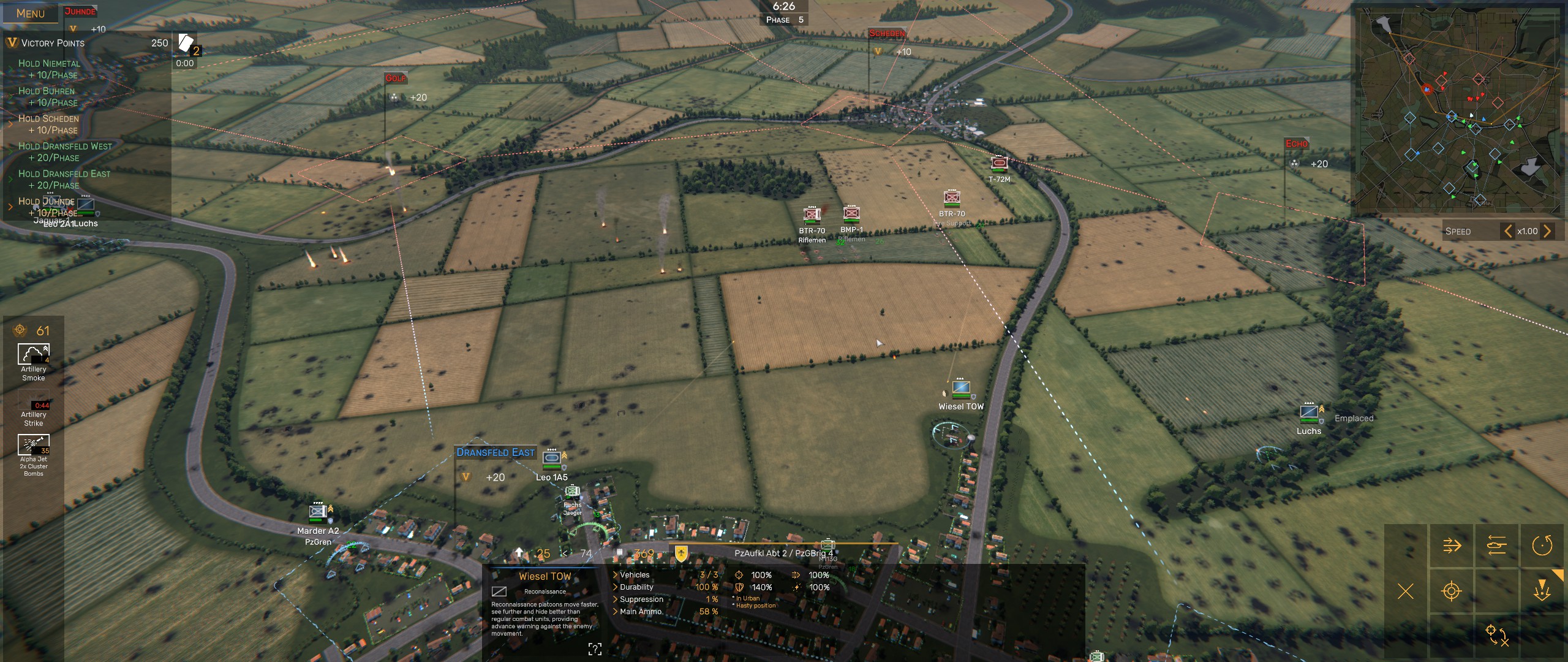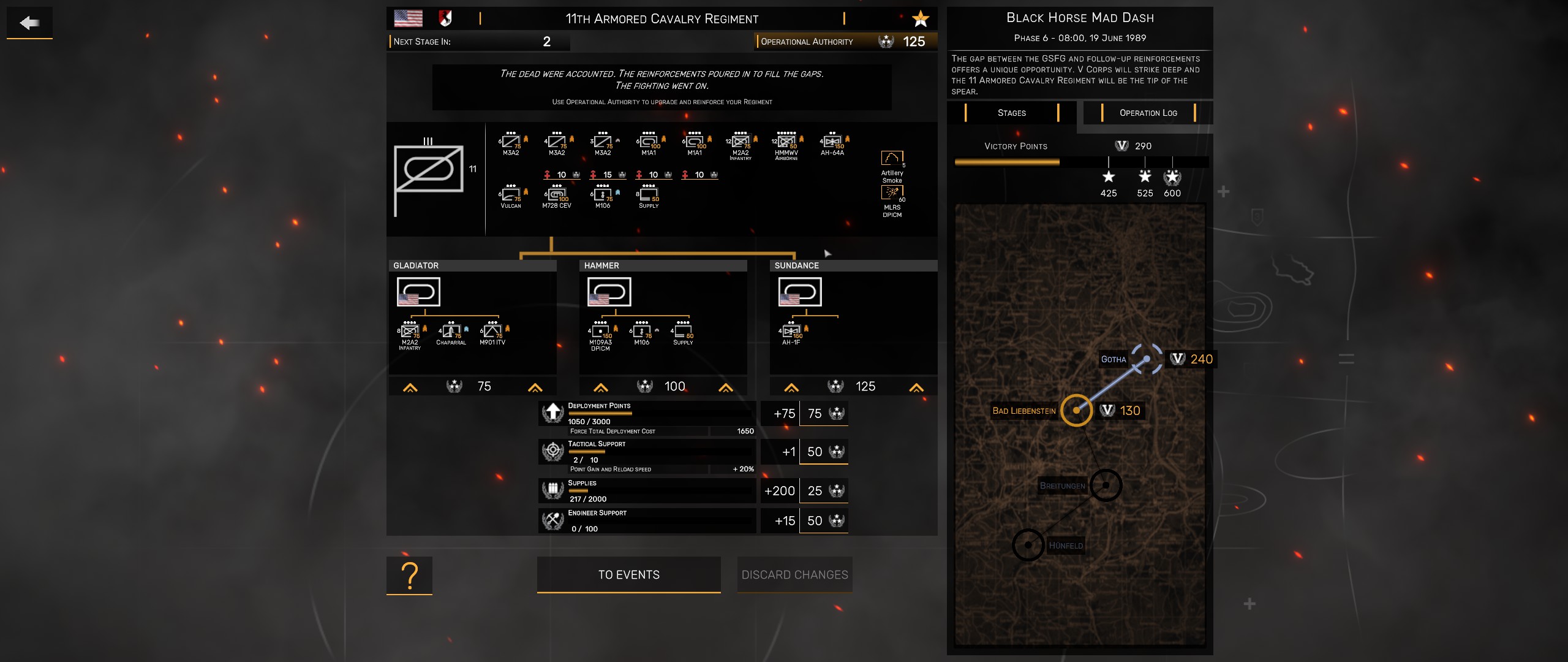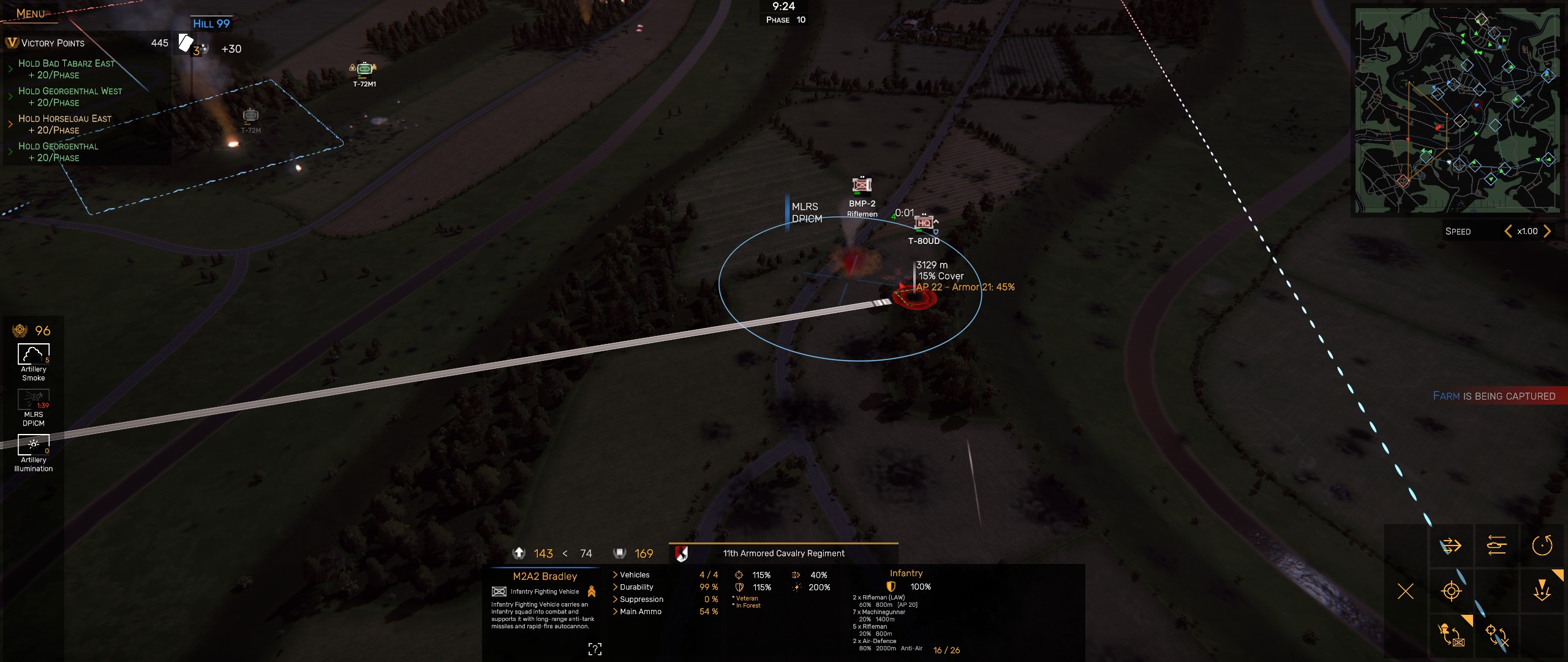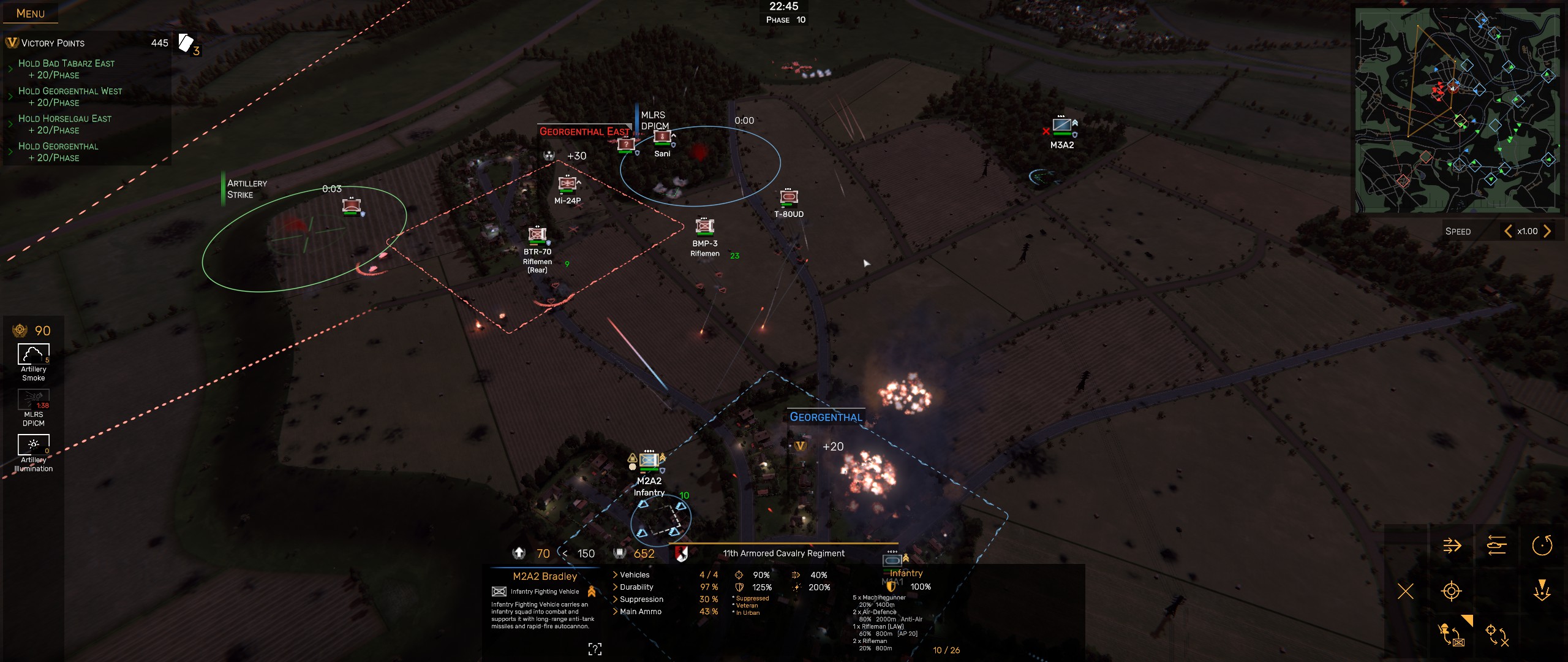Regiments is a Cold War real-time tactics game that I could best sum up as an indie spiritual successor to Eugen’s Wargame series, and in particular, the first game in the series — Wargame: European Escalation. Overall, it stands as a testament to the “tight, focused” school of strategy game design.

Regiments’ overall philosophy is elegance1. Like Wargame, Battle Academy, and Panzer General, it operates at the beer-and-pretzels end of the wargaming spectrum — instead of detailed simulation, it aims to capture the “feel” of its subject. And compared to its most obvious forebear, Wargame, there is less “stuff”: fewer units, less micro-management, and a tighter focus2. The smallest controllable unit is now a platoon of several vehicles, which means units die less quickly, and introduces an interesting trade-off — when should a depleted platoon hang on, and when should it retreat to be replenished? Infantry have been abstracted; they and their transports move and fight together as a single unit. Press a button, and the infantry disembark. Press it again, and they remount.
Regiments is single-player only, with the focus being on the campaign3. This comprises seven individual campaigns, played in order: East German, two West German, Soviet, Belgian, Soviet again, and finally the US.

Campaigns are linear, each comprising 1-4 maps, and several battles (20 minutes each) per map. Between maps, players juggle scarce resources to call in reinforcements, replenish depleted units, top up supplies, or increase the deployment limit in battle. I liked the campaign progression:
- On Normal, I found the difficulty about right. After the easy opening campaign, the difficulty ramped up quickly, without becoming frustrating4.
- The difficulty culminates with the last two campaigns. The US campaign gives players the most powerful equipment in the game, and then after a couple of relatively easy maps, pits us against a vast Soviet offensive. It was a fittingly climactic clash of the titans.
- There is an “anti-frustration” feature: you can skip a campaign and move onto the next one if you’re stuck!

Battles usually involve capturing or defending objective zones. A few introduce a wrinkle, such as defending a friendly convoy, stopping an enemy convoy, or hunting down special enemies (HQ or artillery units). Generally, I like the fluid way in which they play out:
- “Take and hold” missions alternate between pushing forward and holding ground against counterattacks. Sometimes, I had to scramble when an enemy counterattack threatened to roll up my exposed lines of communication and cut off my spearhead.
- On the defence, there’s a balance between holding entrenched positions and waging a mobile defence. Part of the skill of playing Regiments is knowing when to stand and fight; when to hold on and buy time; and when to bug out.
- The exception was several “raid” missions, which I found too gamey compared to set-piece battles.

Part of Regiments’ appeal is brevity5. Individual campaign battles are 20 minutes each, which allows several to be played in one sitting. According to Steam, I finished the entire campaign in 25 hours (probably less, after taking AFK time into account). I prefer shorter, finishable games, so this was a plus for me.
Now that I’ve finished the campaign, what’s next? More armies, features, and campaigns are planned for the game, and I’d be interested in any DLC. There’s a strong foundation here — I’d like to see where the game goes next. And I’m sure it will be on my year-end list of 2022’s highlights.
Enjoying the site? Subscribe via email below.
- Perhaps not coincidentally, it is the work of a solo developer ↩
- Regiments does offer one feature missing from Wargame — night battles. These generally favour NATO, given their superior night vision equipment. ↩
- There is also a skirmish mode, which I haven’t tried yet. ↩
- Eugen could learn from this — I never finished the European Escalation and Steel Division: Normandy 1944 campaigns, both of which thought it was fun to beat the player’s head against the wall. ↩
- With a price tag to match — it’s pretty cheap at US$30. It was even cheaper at launch. ↩
